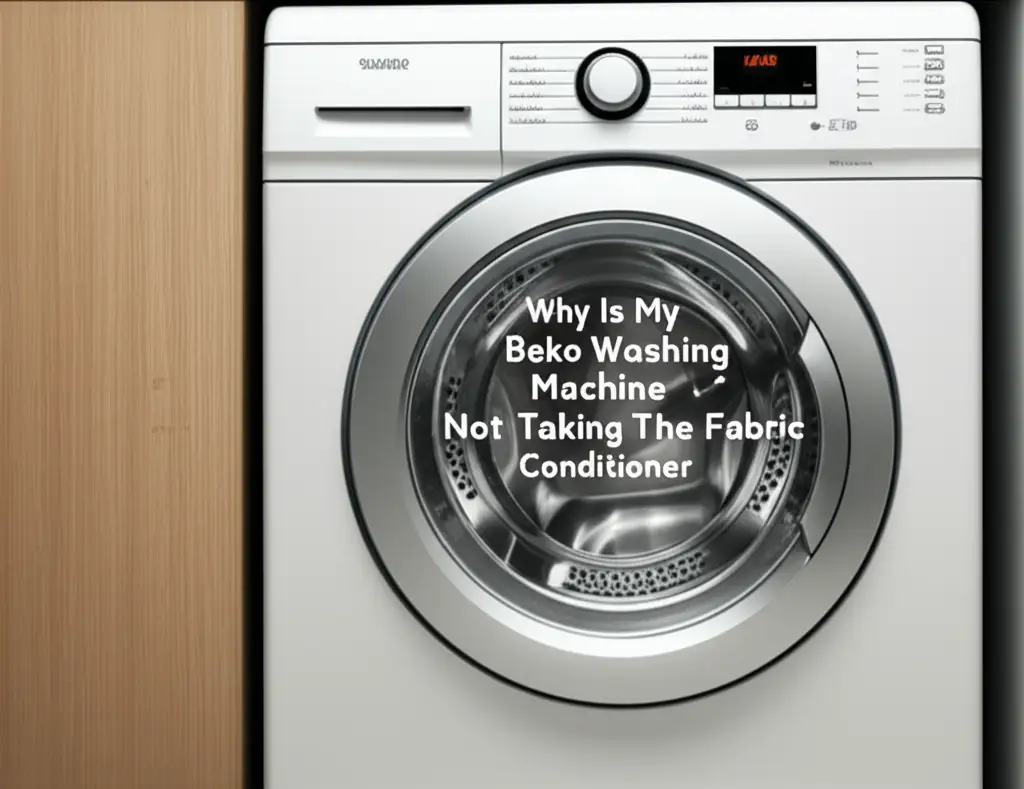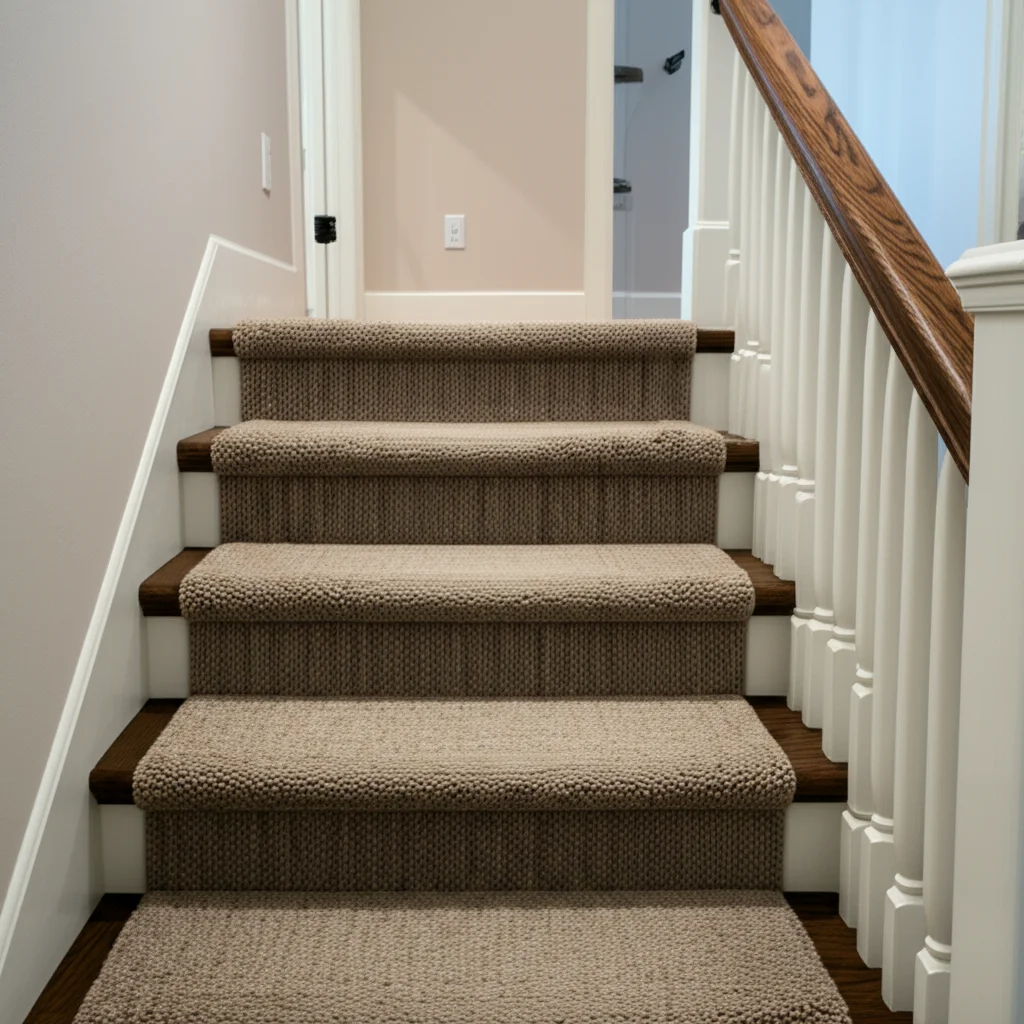· Katria Melrose · Home Improvement · 12 min read
Why Is My Beko Washing Machine Not Taking The Fabric Conditioner

Fix Your Beko Washer: Fabric Conditioner Not Dispensing
Have you ever pulled your clothes from the washing machine, expecting that fresh, soft feel, only to find the fabric conditioner still sitting in the dispenser drawer? It is a common problem for many Beko washing machine owners. This issue can leave your laundry feeling rough and lacking that pleasant scent.
I understand how frustrating this can be. It defeats the purpose of using conditioner at all. This guide will help you understand why your Beko washing machine is not taking the fabric conditioner. We will cover common causes and provide straightforward steps to get your machine working properly again. Get ready to enjoy perfectly conditioned laundry.
Takeaway: Restore Your Fabric Conditioner Dispenser
- Clean the Dispenser Drawer: Remove and thoroughly clean all compartments, especially the fabric conditioner section and its siphon cap.
- Check Water Pressure: Ensure your home’s water pressure is adequate for the machine to draw conditioner.
- Inspect Siphon Mechanism: Verify the siphon cap is correctly seated and free from blockages.
- Use Proper Conditioner: Confirm the fabric conditioner is not too thick or expired.
- Avoid Overfilling: Do not fill the dispenser above the ‘MAX’ line.
- Maintain Machine Cleanliness: Regularly clean the drum and hoses to prevent buildup.
Why is my Beko washing machine not taking the fabric conditioner? Your Beko washing machine often fails to dispense fabric conditioner due to a clogged dispenser drawer, a faulty or blocked siphon mechanism, or insufficient water pressure during the rinse cycle. Buildup of conditioner or detergent residues can also prevent proper dispensing.
Understanding the Fabric Conditioner Dispenser
Your Beko washing machine uses a smart system to dispense fabric conditioner at the correct time. The conditioner sits in a specific compartment in the dispenser drawer. During the rinse cycle, water flows into this compartment. This water creates a siphon effect.
The siphon then draws the conditioner out of the drawer. It flushes it into the washing machine drum. If any part of this system is blocked or not working correctly, the conditioner will remain in the drawer. Proper understanding helps in troubleshooting.
How the Siphon Mechanism Works
The siphon mechanism is a crucial part of the fabric conditioner dispenser. It is usually a small cap or a specific design within the conditioner compartment. Water fills this area to a certain level. Once the water reaches the top of the siphon, a vacuum forms.
This vacuum then pulls the conditioner, along with the water, out of the drawer and into the wash. If this siphon is dirty, blocked, or missing, the conditioner will not be drawn out. Keeping it clean is very important for function.
Clogged Dispenser Drawer: The Most Common Culprit
A clogged dispenser drawer is the leading reason for your Beko washing machine not taking fabric conditioner. Over time, fabric conditioner and detergent residues can build up. This sticky residue blocks the small channels and the siphon mechanism. When these channels are blocked, water cannot flow correctly.
This prevents the siphon from working. The conditioner then stays in the drawer. Regular cleaning can prevent this issue. It is a simple step that often solves the problem.
Cleaning the Dispenser Drawer
Cleaning the dispenser drawer is straightforward. I recommend doing this regularly to prevent clogs. Here is how you can do it:
- Remove the Drawer: Most Beko washing machine dispenser drawers can be pulled out completely. Look for a small tab or button to press for release.
- Disassemble Components: Take out any removable parts, such as the siphon cap or inserts. This allows for a thorough clean.
- Soak in Warm Water: Place all parts in a sink filled with warm, soapy water. Let them soak for at least 30 minutes to loosen hardened residue.
- Scrub Thoroughly: Use a small brush, like an old toothbrush, to scrub away all residue. Pay close attention to the siphon area and any narrow channels. Ensure all holes are clear.
- Rinse and Dry: Rinse all parts under clean running water until no soap residue remains. Dry them completely before putting them back.
- Clean the Drawer Housing: While the drawer is out, clean the housing inside the machine. Residue can build up here too. A damp cloth or brush can remove this. If you notice your washing machine leaking from the dispenser, it might also be due to clogs. Learn why your Beko washing machine leaks from the soap dispenser.
Issues with Water Pressure and Supply
Proper water pressure is essential for your Beko washing machine to function correctly. This includes dispensing fabric conditioner. If the water pressure is too low, the machine may not have enough force to create the siphon effect. This prevents the conditioner from being drawn out.
Low water pressure can result from various issues. These include partially closed taps, kinked hoses, or even issues with your home’s water supply. It is important to check these before assuming a machine fault. Ensuring good water flow is a key diagnostic step.
Checking Water Supply and Hoses
You should check the water supply to your washing machine. Low pressure can cause many problems. Here are steps to check:
- Inspect Water Taps: Make sure both hot and cold water taps connected to your washing machine are fully open. Sometimes they get partially closed accidentally.
- Examine Inlet Hoses: Look for kinks or bends in the water inlet hoses at the back of the machine. Straighten any kinks.
- Clean Inlet Filters: There are small mesh filters where the hoses connect to the machine. These can get clogged with sediment. Turn off the water, disconnect the hoses, and clean these filters.
- Test Water Pressure: You can do a simple test. Disconnect a hose from the machine and place it into a bucket. Turn on the water tap. A strong, steady stream indicates good pressure. If the stream is weak, the issue might be with your home’s plumbing.
Incorrect Fabric Conditioner Usage
The type and amount of fabric conditioner you use can affect its dispensing. If the conditioner is too thick, it may not flow easily. It can also leave behind more residue. Using too much conditioner can also cause problems.
Overfilling the dispenser can interfere with the siphon mechanism. It can also lead to overflows or clogs. Always use the recommended amount. The ‘MAX’ fill line is there for a reason.
Tips for Using Fabric Conditioner Correctly
Using fabric conditioner correctly helps prevent dispensing issues. Here are some simple guidelines:
- Do Not Overfill: Always pour fabric conditioner only up to the ‘MAX’ line in the dispenser compartment. Filling above this line can cause it to dispense too early or not at all. It can also cause leaks. If your machine leaks from the drawer, this could be a reason. Find out why your Beko washing machine keeps leaking from the drawer.
- Dilute Thick Conditioner: If your fabric conditioner is very thick, consider diluting it slightly with a small amount of warm water before adding it to the dispenser. This helps it flow more easily.
- Choose a Suitable Product: Some ultra-concentrated conditioners might be thicker. If you consistently have problems, try a different brand or type.
- Check Expiry Dates: Fabric conditioner can expire and become thicker or clumpy. Always check the expiry date.
- Clean After Each Use: Wiping out the dispenser after each wash cycle can prevent buildup. This small habit makes a big difference.
General Machine Maintenance and Clogs
Beyond the dispenser drawer itself, the overall cleanliness of your washing machine plays a role. Limescale, mold, and detergent buildup can affect various parts of the machine. This includes the internal hoses and spray jets. If these are blocked, water flow to the dispenser can be impacted.
A well-maintained machine runs more efficiently. It also prevents many common issues, including fabric conditioner problems. Regular cleaning of the entire machine is good practice. This includes the drum and detergent pathways.
Steps for Washing Machine Maintenance
Regular maintenance prevents many problems. Keeping your Beko washing machine clean is simple.
- Run a Maintenance Wash: Every month or two, run an empty hot wash cycle. Add a cup of white vinegar or a washing machine cleaner to the detergent drawer. This helps remove soap scum, mold, and bacteria from the drum and hoses. Learn how to clean your washing machine inside. You can also use vinegar for cleaning. Discover how to clean your washing machine with vinegar.
- Clean the Filter: Locate and clean the washing machine’s drain pump filter regularly. This filter traps lint, coins, and other debris. A clogged filter can affect drainage and overall machine performance. Find out how to clean your washing machine filter.
- Inspect Spray Nozzles: Sometimes, the small nozzles that spray water into the dispenser drawer can get blocked. Use a small needle or toothpick to clear them gently.
- Leave Door/Drawer Ajar: After each wash, leave the washing machine door and dispenser drawer slightly open. This allows air to circulate and helps prevent mold and mildew growth. Mold can cause blockages and odors. Learn how to clean mold from your washing machine.
- Check for Leaks: Regularly inspect hoses and connections for any signs of leaks. Address them promptly to prevent larger issues. A DIY approach can save you money. Explore how to do it yourself with washing machine repairs.
Machine Malfunction: When to Call a Professional
If you have tried all the troubleshooting steps and your Beko washing machine is still not taking the fabric conditioner, there might be a more serious internal malfunction. These issues are less common but can occur. They usually involve internal valves or electronic controls.
Do not attempt complex repairs yourself if you are not experienced. You could cause more damage or void your warranty. Knowing when to call a professional saves time and prevents headaches. It ensures a proper and safe repair.
Signs of a Deeper Problem
Recognizing when to seek professional help is important. Here are some signs that indicate a more complex issue:
- No Water in Dispenser: If no water enters the fabric conditioner compartment during the rinse cycle, even after checking water supply, a fill valve might be faulty. This valve controls water flow into the dispenser.
- Machine Not Draining: Problems with draining can sometimes affect the rinse cycle, indirectly impacting conditioner dispensing.
- Error Codes: Your Beko washing machine might display an error code. Consult your user manual to understand what the code means. Error codes often point to specific internal faults.
- Unusual Noises: If you hear strange noises during the wash or rinse cycle, it could indicate a motor problem or pump issue. These can affect water delivery.
- No Change After Cleaning: If you have thoroughly cleaned the dispenser, checked water pressure, and used correct conditioner, and the problem persists, it is time for a professional diagnosis. They have specialized tools and knowledge.
Prevention is Key: Long-Term Solutions
Preventing fabric conditioner dispensing problems is easier than fixing them. Regular cleaning and correct usage habits extend the life of your Beko washing machine. It ensures consistent performance. A little proactive maintenance goes a long way.
Establishing a routine for cleaning your machine means fewer unexpected issues. It keeps your laundry soft and fresh. This approach saves you from frustration and potential repair costs. Make maintenance a part of your laundry routine.
Best Practices for a Smooth-Running Washer
Maintaining your Beko washing machine for optimal performance is simple. Follow these best practices:
- Monthly Deep Clean: Set a reminder to clean your dispenser drawer and run a maintenance wash once a month. This prevents residue buildup.
- Use Correct Detergent: Use the right amount and type of detergent for your machine. Excess detergent can contribute to residue and clogs.
- Check Load Size: Do not overload your washing machine. Overloading can interfere with water circulation and rinse efficiency. It might also cause clothes to absorb conditioner unevenly.
- Wipe Down After Each Wash: After completing a laundry cycle, wipe down the inside of the dispenser drawer. This removes any wet residue before it hardens.
- Read the Manual: Refer to your Beko washing machine’s user manual. It contains specific maintenance tips and troubleshooting steps for your model.
Frequently Asked Questions
Q1: Can using too much fabric conditioner block the dispenser? Yes, absolutely. Overfilling the fabric conditioner compartment past the ‘MAX’ line can cause it to overflow or not dispense properly. Excess conditioner can also lead to sticky residue buildup in the siphon and channels. This blockage prevents future dispensing, requiring thorough cleaning.
Q2: How often should I clean my Beko washing machine’s fabric conditioner dispenser? You should clean your Beko washing machine’s fabric conditioner dispenser at least once a month. If you use a lot of conditioner or notice residue quickly, cleaning it more often, perhaps every two weeks, is beneficial. Regular cleaning prevents clogs and ensures proper function.
Q3: What if my fabric conditioner is too thick? If your fabric conditioner is too thick, it may not flow through the dispenser easily. Try diluting it with a small amount of warm water (about a tablespoon per dose) before pouring it into the dispenser. This helps it become more fluid and allows the siphon mechanism to draw it out effectively.
Q4: Can a dirty washing machine filter affect conditioner dispensing? While a dirty drain pump filter primarily affects draining, a generally unclean machine can suffer from poor water flow. Clogged internal hoses or spray jets, caused by overall grime, could indirectly impact the water supply to the dispenser. Regular filter cleaning is part of overall machine health.
Q5: My Beko washing machine fills with water but does not spin. Is this related? A washing machine filling but not spinning indicates a different issue, likely with the motor, pump, or control board. While not directly related to conditioner dispensing, it points to a machine malfunction. Address the spinning issue separately. It suggests a more significant problem. Learn why your Beko washing machine fills with water but not spinning.
Q6: Is it safe to use white vinegar to clean the fabric conditioner dispenser? Yes, it is very safe and effective. White vinegar is excellent for breaking down soap scum, limescale, and fabric conditioner residue. You can soak the dispenser parts in warm water mixed with white vinegar. Then scrub them clean. It also helps sanitize and remove odors.
Conclusion
Having your Beko washing machine not taking the fabric conditioner is a common and fixable problem. Most issues stem from simple blockages or incorrect usage. I hope this guide has given you clear steps to diagnose and resolve the issue. Start by cleaning the dispenser drawer thoroughly. Check your water pressure. Ensure you are using conditioner correctly.
Regular maintenance is your best defense against this and other washing machine problems. By following these easy tips, you will restore your Beko washing machine’s ability to dispense fabric conditioner effectively. Enjoy softer, fresher laundry with every wash. If problems persist, consider professional help for more complex internal issues. Take action today for a happier laundry routine!
- Beko washing machine
- fabric conditioner
- washing machine repair
- appliance troubleshooting
- home maintenance
- laundry tips





